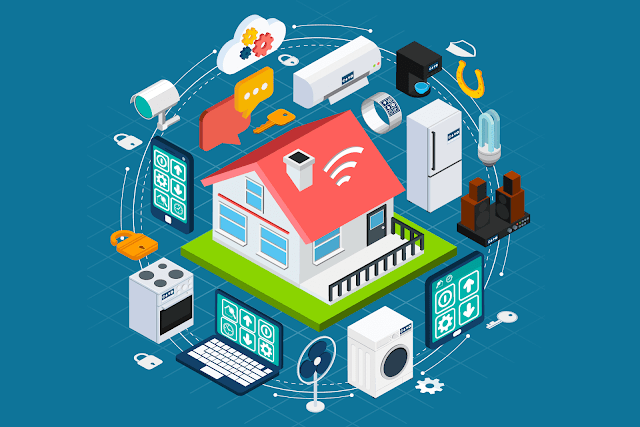Internet of things: what is it, why and how it works
We will tell you what the Internet of things is, why it is needed and what the future holds for us: from fiction to real life.
What is the Internet of things?
Now many are talking about the Internet of things, but not everyone understands what it is.
According to Wikipedia, this is the concept of a computer network of physical objects (“things”) equipped with embedded technologies for interacting with each other or with the external environment, considering the organization of such networks as a phenomenon that can restructure economic and social processes, excluding actions and operations need human involvement.
In simple terms, the Internet of things is a kind of network into which things are combined. And by things, I mean anything: a car, iron, furniture, slippers. All this will be able to "communicate" with each other without human intervention using the transmitted data.
The appearance of such a system was expected, because laziness is the engine of progress. You do not have to go to the coffee maker in the morning to make coffee. She already knows when you usually wake up, and by this time she will make the aromatic coffee. Cool? Perhaps, but how realistic is it and when will it appear?How it works
We are at the beginning of the road, and it’s too early to talk about the Internet of things. Take for example the coffee maker, which I wrote above. Now a person has to independently enter the time of her awakening, so that she can make him coffee in the morning. But what happens if a person is not at home at this time or wants tea? Yes, everything is the same, since he did not change the program and the soulless piece of iron brewed his coffee again. This scenario is interesting, but it is more a process automation than the Internet of things.
There is always a man at the helm, he is the center. Smart gadgets every year becomes more and more, but they do not work without the command of a person. This unfortunate coffee maker will have to constantly monitor, change the program, which is inconvenient.
How it should work
The Internet of Things implies that a person defines a goal, and does not set a program to achieve this goal. It is even better if the system itself analyzes the data and predicts a person’s wishes.
You are going home from work, tired and hungry. At this time, the car has already informed the house that in half an hour it will bring you: they say, get ready. The light turns on, the thermostat adjusts the comfortable temperature, dinner is prepared in the oven. We went into the house - the TV set was turned on with the recording of the game of your favorite team, dinner is ready, welcome home.
Here are the main features of the Internet of things:
- This is a constant accompaniment of everyday human actions.
- Everything happens transparently, unobtrusively, with a focus on results.
- The person indicates what should happen, not how to do it.
You say fiction? No, this is the near future, but to achieve such results, much more needs to be done.
How to achieve this
1. Single center
It is logical that the center of all these things should not be a person, but some device that will transmit the program to achieve the goal. It will monitor other devices and tasks, as well as collect data. Such a device should be in every home, office and other places. They will be united by a single network through which they will exchange data and help people anywhere.
We already see the beginnings of such a center now. Amazon Echo, Google Home, and Appleseems to be working on something similar too. Such systems can now play the role of the center of a smart home, although their capabilities are so far limited.
2. Uniform standards
This will probably be the main obstacle to the global Internet of things. For large-scale work of the system requires a single language. Apple, Google, Microsoft are currently working on their ecosystem. But they all move separately, in different directions, which means, at best, we will get local systems that are difficult to combine, even at the city level.
Perhaps some of the systems will become the standard, or each network will remain local and will not grow into something global.
3. Security
Naturally, developing such a system, you need to take care of data protection. If a hacker hacks the network, he will know absolutely everything about you . Clever things will pass you to intruders with giblets, so it’s worth serious work on data encryption. Of course, they are working on this now, but occasionally pop-up scandals suggest that it is still far from ideal security.
What awaits us in the near future
In the near future, we are waiting for smart homes, which will open the doors for owners as they approach, maintain a comfortable microclimate, self-replenish the refrigerator and order the necessary medicines if a person falls ill. And before that, the house will receive indicators from a smart bracelet and send them to the doctor. Unmanned vehicles will drive along the roads, and there will no longer be traffic jams on the roads themselves. The Internet of Things will allow you to develop a more advanced traffic control system that can prevent traffic jams and traffic jams.
Already, many gadgets are working in conjunction with various systems, but in the next 5–10 years we will see a real boom in the development of the Internet of things. Here is only in the future possible alignment as in the cartoon "WALL-E", where humanity has turned into helpless fat men served by robots. So-so perspective. What do you think?






Comments: 0
Post a Comment